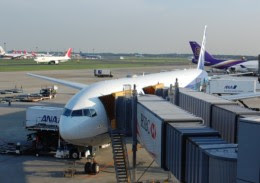I already wrote about how Japanese handsets look like, now let me share the inside.
Most handsets in Japan are not recognized by the manufacturer but by the operator, this happens because most operators "build" their own handsets, they take the design from the handset manufacturers but all the features and keys are customized for the operator. This is particularly true with NTT Docomo and KDDI, Softbank (previous Vodafone Japan) is not so involved in this process (maybe that is one of the reasons for them to be the 3rd player in the market). So, when a Japanese is going to buy a phone, instead of saying I want the Nokia XX, they say, I want the NTT XX... it might seem a small difference, but it shows the power of the operators in the Japanese market.
So how does the phone looks inside? One thing is that Japanese people like list menus and they like to see everything at once, so most phones have a list menu and most of the features are available at the first glance. Of course, because there are a lot features, they have second and third level menus, but the most common features are available right there on the first level menu.
For a foreigner like me, the big difference is that the most common features for a Japanese are different then my own. For example I use SMS, Japanese use e-mail, so e-mail is right there... SMS is hidden somewhere always hard to find!
Besides the menu itself, the general usage of the mobile phone is very different, for example, whenever I use a NTT phone, if I call someone and want to redial that number, just pressing the green key doesn't work... for some reason that I still don't understand, the call log is always hard to find, so I tend to give up and just write the number again or go to the contacts address book!
This probably explains why most western handset manufacturers have a small market share in Japan.



























